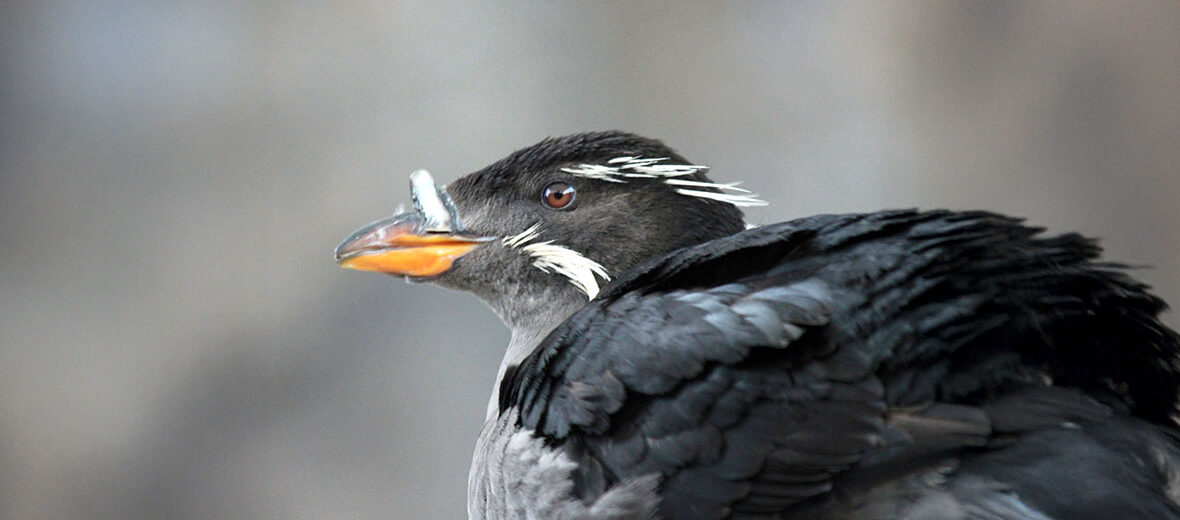
The rhinoceros auklet, aka rhinoceros puffin, gets their name from the horn-like extension of the beak that is only present in adults. They dwell along the coastlines of the North Pacific, from eastern Asia to western Canada, and United States. These sea birds are threatened by overfishing; invasive species, and with them disease and predation; land pollution, water pollution, & microplastics pollution; and climate change, which causes long-term changes in sea surface temperatures and altered timing and intensity of upwelling, subsequently altering the availability of food. They are abundant enough though to be listed as Least Concern by the IUCN. Their populations are decreasing however.
First the Stats…
Scientific name: Cerorhinca monocerata
Weight: Up to 21.9 ounces
Length: Up to 11.4 inches
Wingspan: Up to 24.4 inches
Lifespan: Up to 28 years
Now on to the Facts!
1.) Their horn has fluorescent properties when viewed with an ultraviolet light, which is possibly involved in reproductive signaling.
2.) Other common names for these critters are horn-billed puffin, rhino auklet, or unicorn puffin.
3.) They are generally poor at flying, but can swim with great skill.
4.) Fish, krill, and squid are all happily consumed.
5.) These birds are believed to have evolved in the North Pacific, from the mid to late Miocene Epoch (23 million years ago).
But wait, there’s more on the rhinoceros auklet!
6.) Seeing as rhinoceros auklets are monogamous (mate for life) and highly social, they depend quite heavily on physical characteristics of the other species in order to find a lifetime partner.
7.) These auks breed from California (in the Channel Islands) to the Aleutian Islands in Alaska in North America; as well as Hokkaidō and Honshū, Japan, & the Korean Peninsula along with Sakhalin Island in Asia.
Did you know…?
They can dive up to 187 feet and hold their breath for up to 2.47 minutes.
8.) They nest in burrows dug into the soil, or within natural caves and cavities up to 16.4 feet deep.
9.) Females lay a single egg between May and June that hatches in up to 35 days.
10.) The chick is fed at night to avoid predation and kleptoparasitism (when 1 animal steals the food of another animal) from gulls.
Now a Short Rhinoceros Auklet Video!
Be sure to share & comment below! Also, check out the Critter Science YouTube channel. Videos added regularly!

Want to suggest a critter for me to write about? Let me know here.
Some source material acquired from: Wikipedia & IUCN
Photo credit: Dick Daniels



